A Home for All
San Francisco's landmark octagon houses.
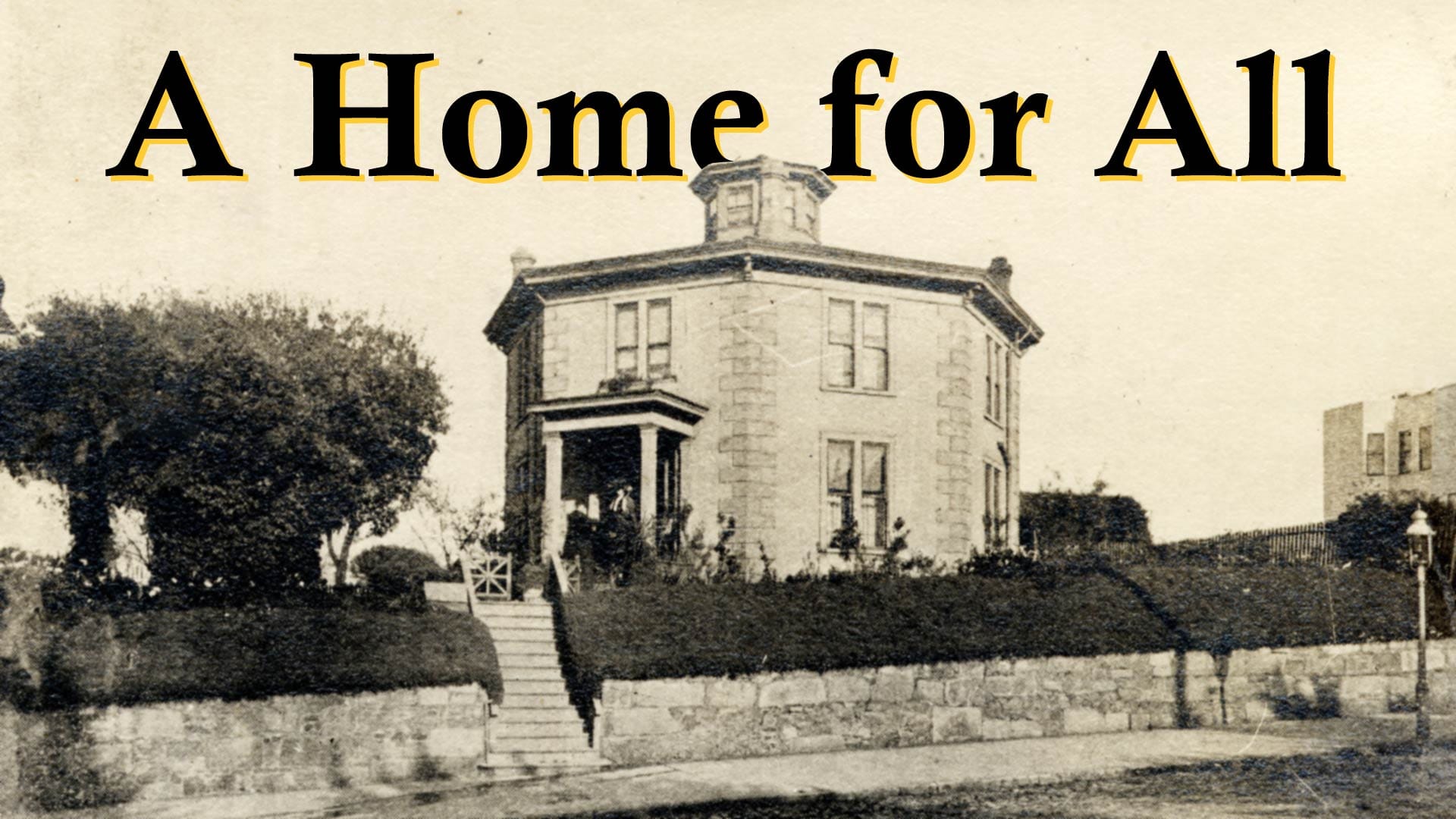
A version of this originally was posted on the San Francisco Heritage site in 2020, but you probably missed it.
They say there are two sides to every story, but maybe eight is better?
A Home for All is what Orson S. Fowler named his 1853 book on the benefits and “superb arrangement” of the octagonal house he constructed in Fishkill, New York.
Inside, readers learned how an eight-sided building improved air circulation, maximized light, and, in approximating a sphere, hewed nearer to natural perfection.
Fowler brooked no disagreement on the superiority of roundness over angularity: “This is not one of those fancy matters which allow of diversity of opinion, but is a fixed ordinance of Nature…”
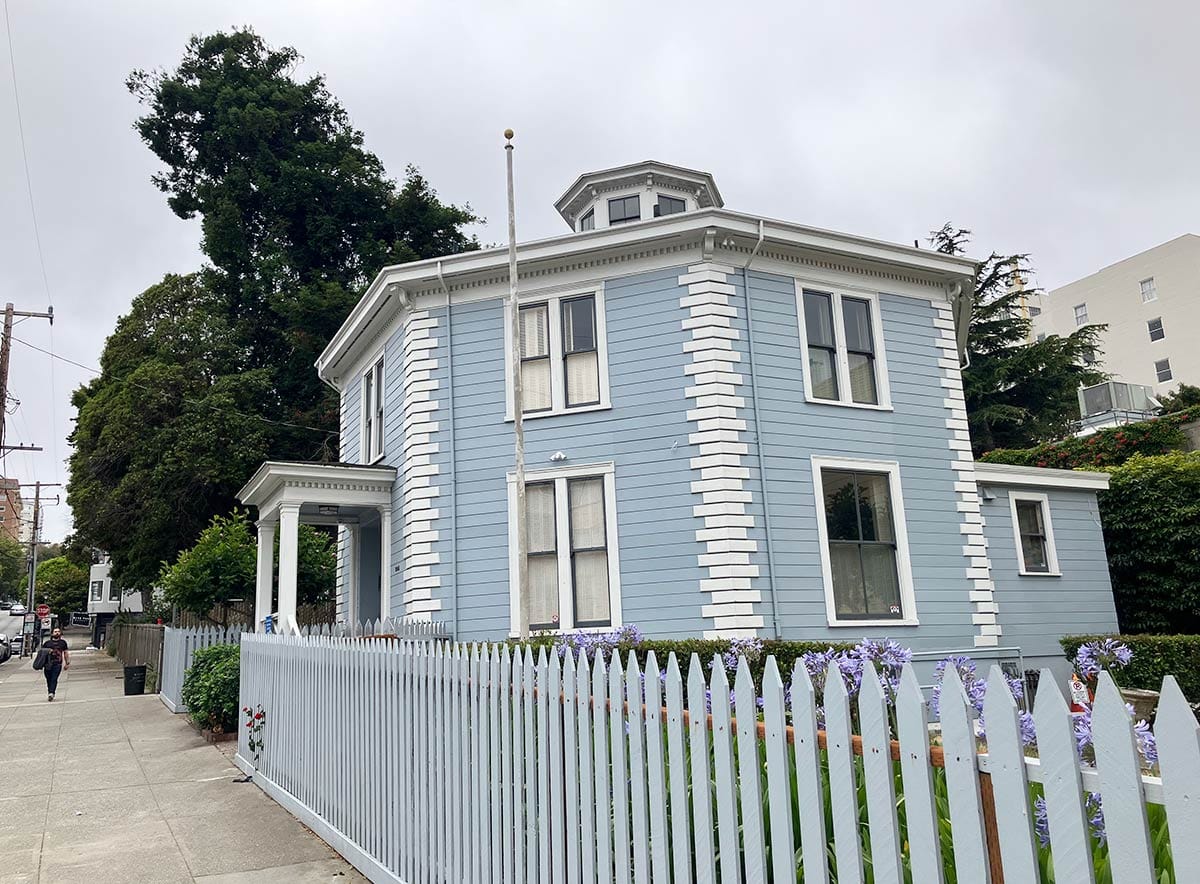
Home was more than an instruction manual or set of floor plans; it was a philosophical treatise, a judgment on taste and acumen (“[t]he quantity and quality of man’s INTELLECT evince themselves in the houses they build.”). It was a call for revolution.
Eight-sided houses of all sizes and elaborations sprung up across the country in the wake of Fowler’s book, which went through several printings and was commented upon as far away as France, Hawaii, and China.
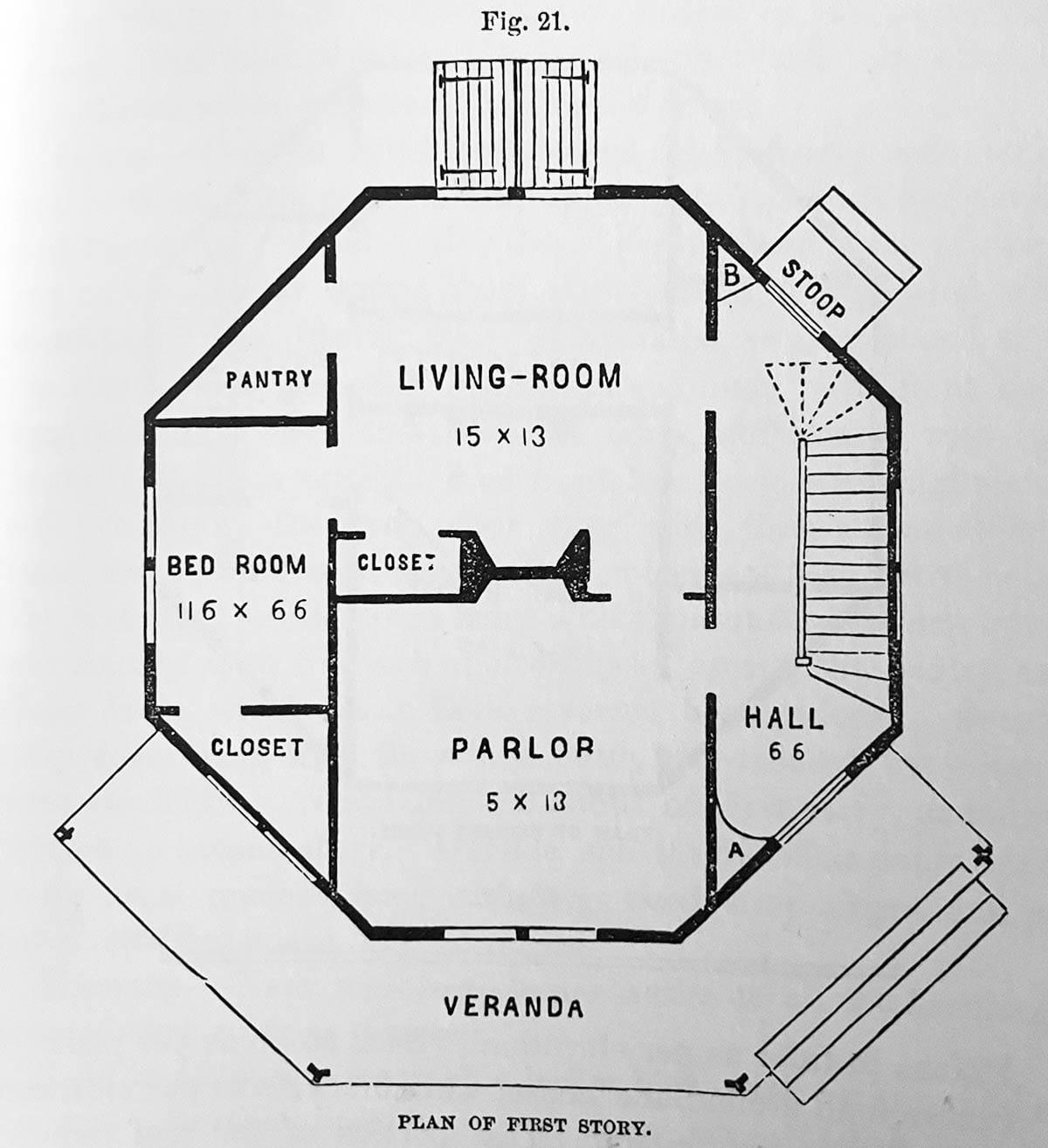
Some enterprising builder brought the fad to the boomtown of San Francisco, where amid humbler shanties, pre-fab iron houses, and gothic cottages, at least five octagon houses went up from Russian Hill to Rincon Hill.
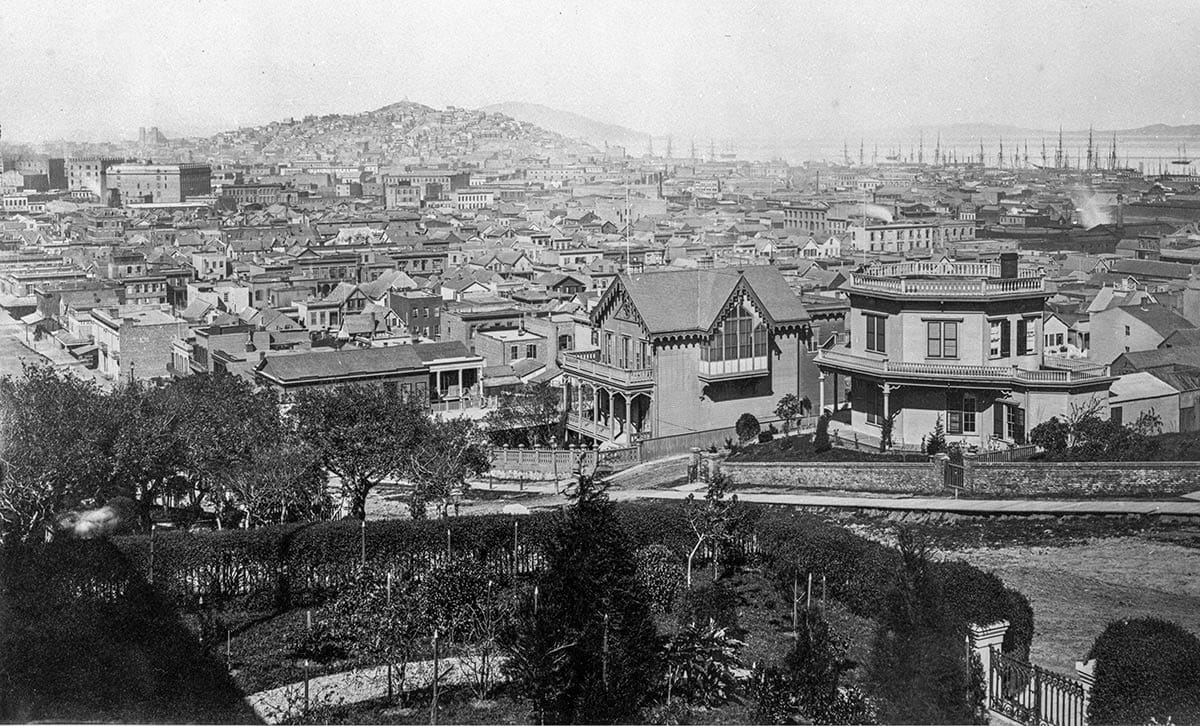
There are just a few octagonal buildings in San Francisco that I know still stand, including the old Marine Exchange lookout station at Lands End (we shall save that for a future San Francisco Story).
Two are designated city landmarks:
Russian Hill Octagon House
1067 Green Street between Leavenworth and Jones Streets
City Landmark #36
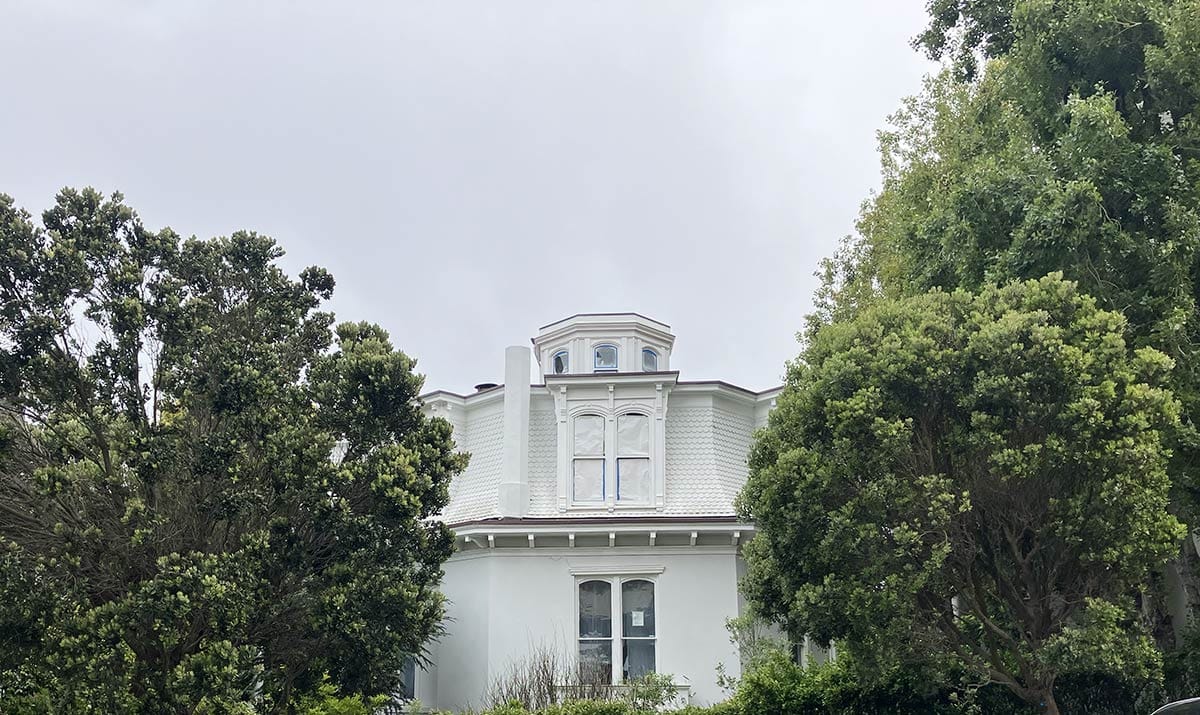
Built as a two-story house in the late 1850s, 1067 Green Street received a Mansard-roofed third story and a cupola (octagonal, of course) under the occupancy of the Feusier family, who owned the property from the 1870s to the 1950s.
This house is constructed close to Orson S. Fowler’s ideal with its lime-cement exterior walls. Fowler titled one section of his book “Wood is Objectionable,” but on lime concrete wrote, “Mixed with sand, formed with brick or stone into any shape we please, it petrifies and remains forever. How simple! How effectual! How infinitely useful!”
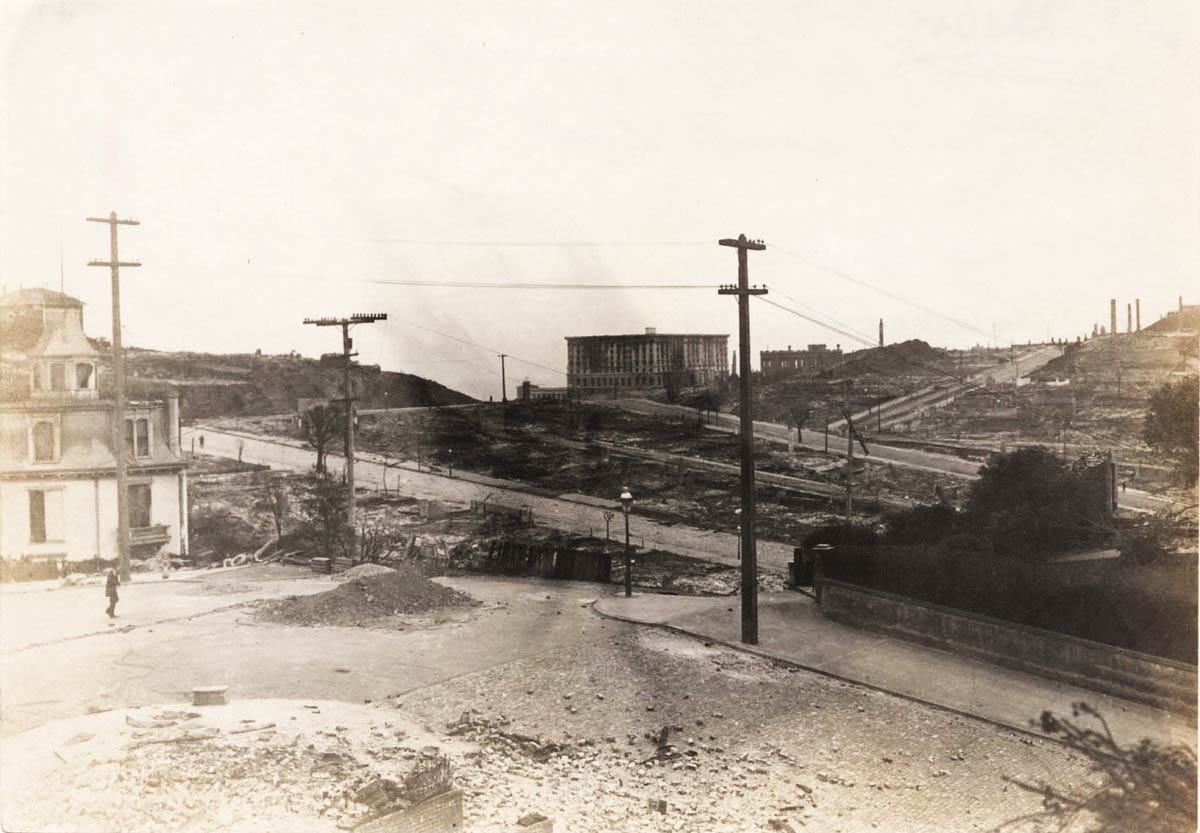
In New York State, Fowler didn’t consider the seismic vulnerability of such construction in a place like California. Situated on the firm ground of Russian Hill, the Green Street house withstood the 1906 earthquake and was lucky to be missed by the subsequent fires.
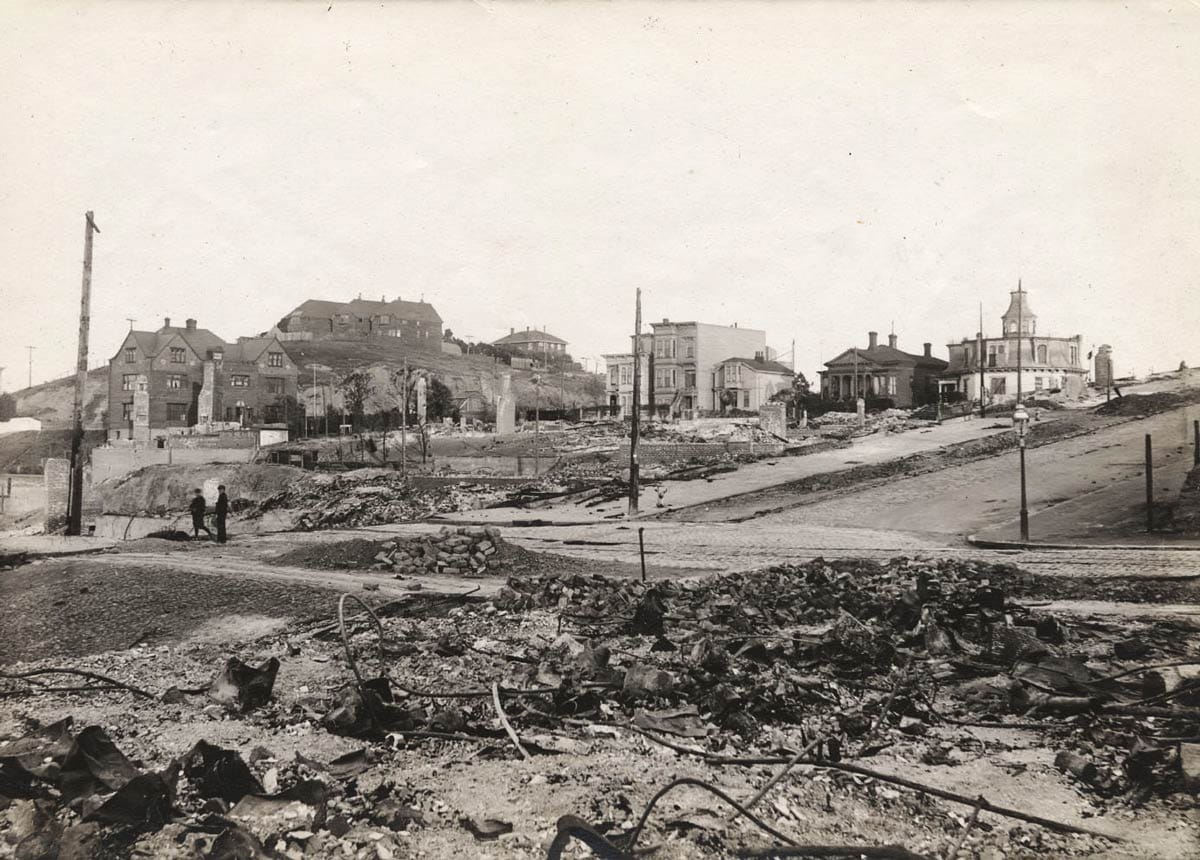
While it has a good-sized garden around it, Fowler would be disappointed that today surrounding trees and apartment buildings deny it the full advantages of sunlight on the west and north. And let us restore that cute hat-like tower!

The Board of Supervisors designated 1067 Green Street as San Francisco City Landmark #36 on November 2, 1970.
Cow Hollow Octagon House
2645 Gough Street at Union Street
City Landmark #17
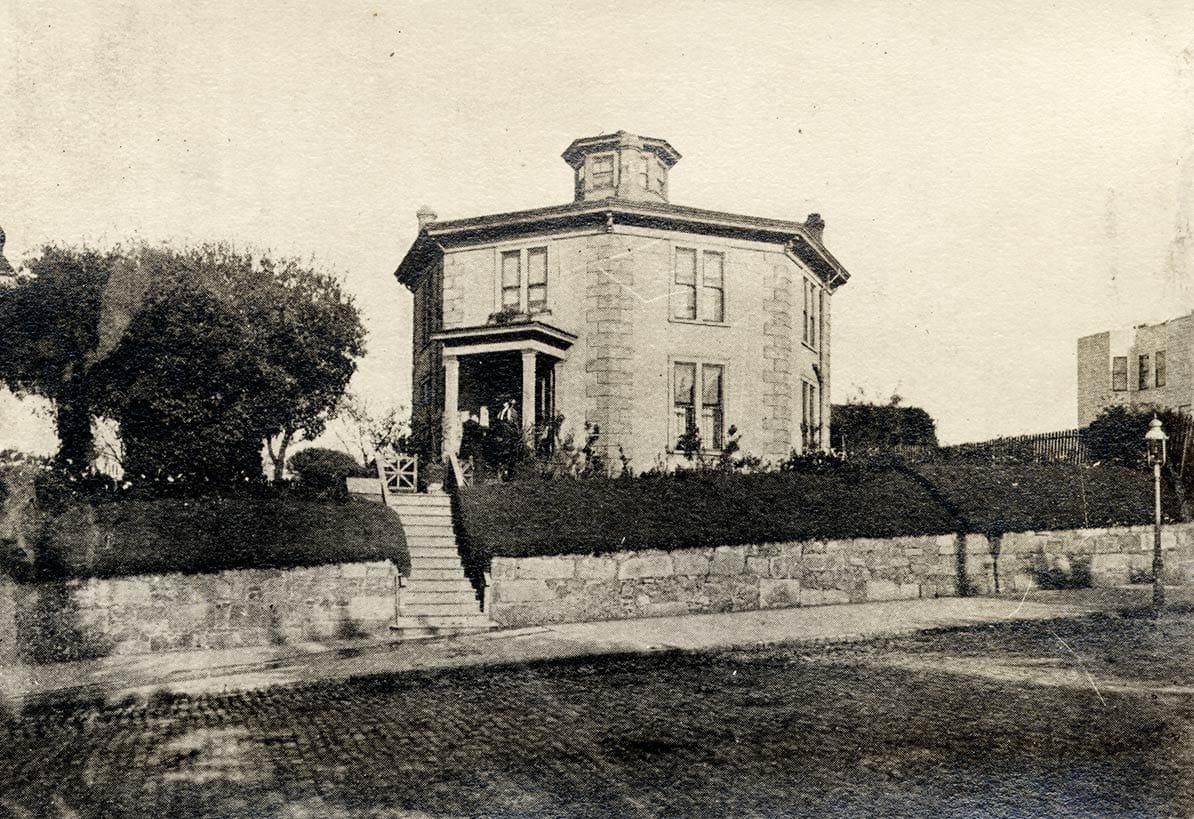
William and Harriet McElroy built their octagon house on the east side of Gough Street between Union and Green Street in 1861, when Cow Hollow’s bovine population rivaled the neighborhood’s human presence.
William died ten years later, but his widow lived in the house until 1891. Poet Daniel O’Connell occupied it for the following three years, making it somewhat of a Bohemian haunt before his landlady sold the property in 1894.
Unlike the Feusier house on rocky Russian Hill, the McElroy property stood on shakier ground and the 1906 earthquake inflicted major damage.
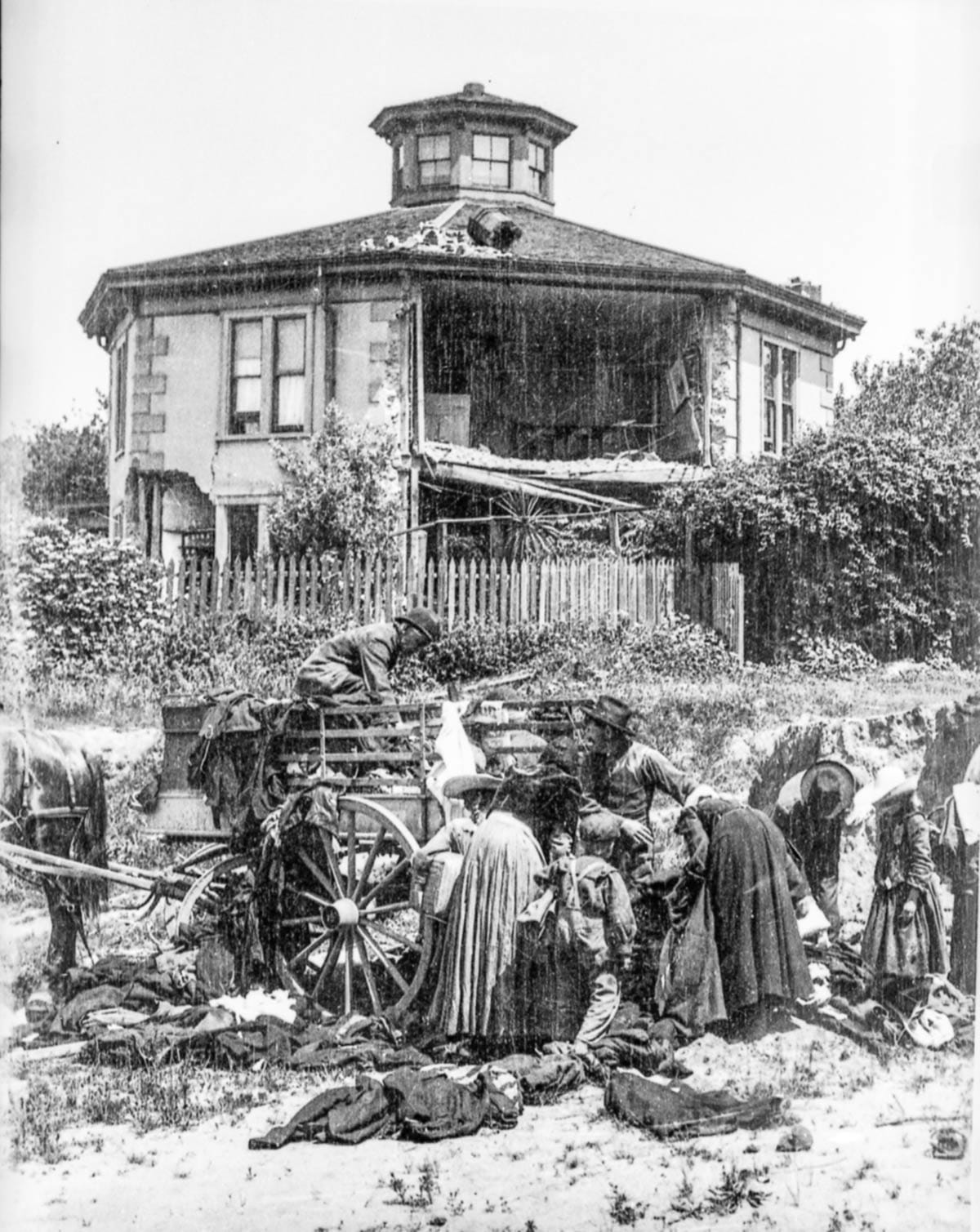
By the 1950s it was on a different kind of shaky ground.
The Pacific Gas and Electric Company had purchased the property as a possible substation site in the early 1900s, and owned the house for years as a neglectful landlord to three spinster sisters. (Ironically, the house was not wired for electricity under the electric company’s ownership.)
In 1951, the company decided to sell out. There seemed little chance any buyer would preserve the ninety-year-old house in its state of disrepair.
In stepped the National Society of Colonial Dames of America, which saved the house by purchasing it and moving it directly west across Gough Street onto property donated by Lucy and Edith Allyne.

On April 7, 1953, the restored house was dedicated as a museum of eighteenth century furniture, manuscripts, and mementos, and still serves as the California headquarters for the society.
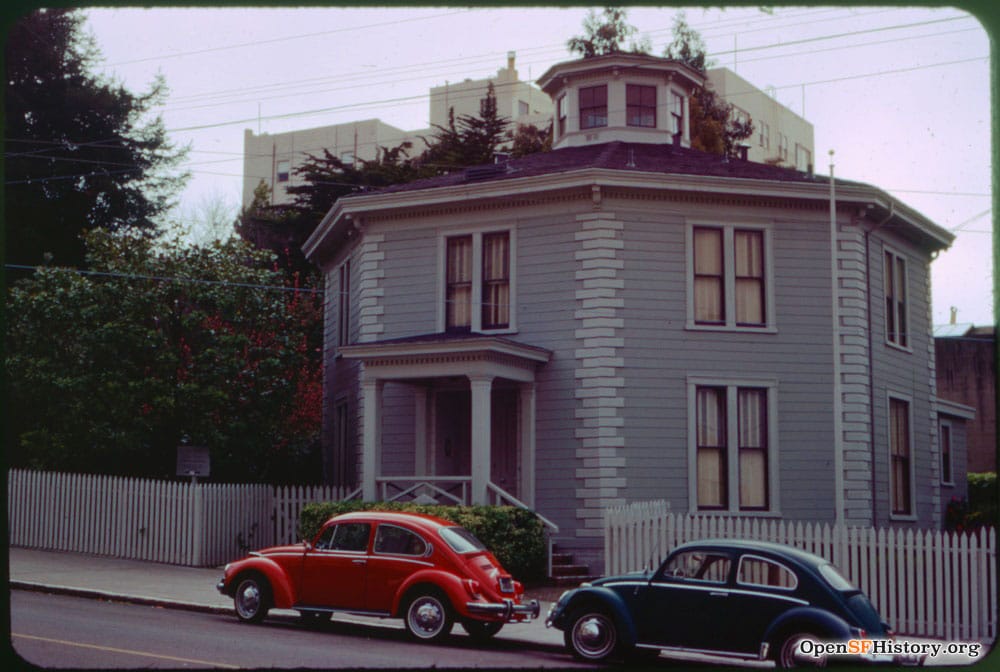
The Colonial Dames open the house for tours twice a month.
When you visit, pay particular attention to the upper floor, which retains the original wedge-shaped room configuration, and decide for yourself if (in the words of Orson Fowler) “the octagon form is more beautiful as well as capacious.”
Woody Beer and Coffee Fund
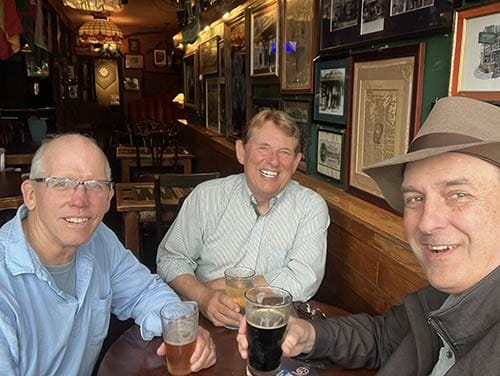
Ah, the gray slate that is a San Francisco sky in July. Perfect weather for a coffee. Or a porter black as the mood of the tourists in shorts. When are you free? Len H. (F.O.W.) and others have already paid for your drink via the Woody Beer and Coffee Fund! (Thanks, Len.)
Sources
Orson S. Fowler, A Home for All, or the Gravel Wall and Octagon Mode of Building (New York: Fowler and Wells, 1853).
Thorne Hall, “Famed Gough St. Octagon House to Become Architectural Museum,” San Francisco Examiner, October 29, 1952, pg. 3.
“Historic S. F. Structure is Now Museum,” San Francisco Examiner, April 8, 1953, pg. 8.

